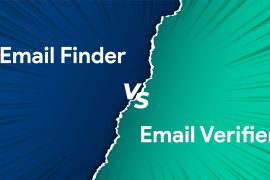Given the vast number of messaging services available today, one might wonder what a solution like Mail.com is truly worth. How credible is it really? What can be expected in terms of security, personalization, or performance for professional or personal use? This article offers an in-depth analysis, supported by concrete comparisons, to determine if this service is genuinely reliable and relevant in today’s email landscape.
Mail.com: Understanding the Service and Its Uses
Mail.com stands out as a messaging platform that allows anyone to create a personalized email address, while enjoying complementary tools related to file storage and centralized management of correspondence. The basic principle is to offer simple and direct access to a modern inbox, without relying on the major historical players in the sector.
This service is particularly appealing because of its variety of domains offered when creating the address. By opting for Mail.com, the user enjoys a flexible platform, capable of addressing various needs: separating professional exchanges from private ones or enhancing a company’s brand image. Thanks to its clear interface, accessible on the majority of browsers, the experience is smooth even for novice users.
Security of Exchanges and Message Deliverability
Sending a message to a Mail.com address often raises questions concerning data security and email deliverability. From a technical standpoint, nothing fundamentally differentiates this domain from other major market references. The infrastructures are designed to ensure the proper circulation of emails, provided the recipient’s address genuinely exists and is still active.
However, the community nature of some generic address providers increases the risk of errors. An email sent to a non-existent address will be systematically rejected (a phenomenon known as “bounce”), which can impact the sender’s digital reputation, particularly when dealing with commercial campaigns or frequent newsletters.
One critical point remains the pre-verification of the target address’s validity. A significant portion of deliverability issues stem from obsolete contact lists. Mass sending to closed address chains can thus send subsequent messages to spam, affecting the overall engagement rate.
To remedy this, it is advised to adopt a rigorous management of address books and, ideally, regularly use verification solutions capable of identifying active or problematic mailboxes before any mass dispatch.
When observing the competition, Mail.com has nothing to envy from today’s international standards. It nonetheless imposes certain limits on the size of attachments and on the advanced functionality of third-party integration, where others offer more flexibility. The ability to choose from over a hundred different domain names, however, remains a notable competitive advantage, offering each user a unique digital identity.
This level of personalization is relatively rare in the market, as most traditional providers limit the choice of the main domain or impose their own name. Mail.com thus positions itself as an attractive alternative for those who wish to refine their communication from the email address stage.
Optimizing the Experience with Mail.com
Taking full advantage of the possibilities offered by Mail.com involves following a few simple best practices. Ensuring an up-to-date contact list facilitates efficient communication and reduces the risk of messages being blocked or ignored by spam filters.
The interface also offers various management tools: folder organization, automatic filtering, and archiving options allow users to control and sort their conversations according to priority levels, hence improving daily convenience.
- Select the appropriate domain type for your activity upon registration
- Set filtering rules to automatically organize new messages
- Regularly sort the inbox to limit the accumulation of spam or unnecessary messages
- Frequently update contacts to limit delivery errors
- Test message sending to different secondary addresses to verify effective deliverability
How to Verify the Validity of a Mail.com Address?
Before adding new contacts to your address book, it is recommended to use a dedicated email verification service. These tools analyze the syntax, confirm the actual existence of the inbox, and sometimes directly consult the remote server to avoid any false positives.
For companies managing large volumes of sends, this regular check helps preserve their image and ensures that each campaign reaches a real audience, thus optimizing the return on investment of marketing efforts. This concern for reliability is also beneficial for individuals wishing to streamline their everyday exchanges.
| Criterion | Role in Validation |
|---|---|
| Address Format | Check for anomalies or forbidden characters |
| Presence of the Mail.com Domain | Confirm that the domain truly exists |
| Server Response Test | Detect if the inbox correctly responds to a request |
| Interaction History | Ensure the address has already been contacted and responded positively |
Personalization and Adaptability: What Benefits for the User?
The extended choice in terms of domains constitutes a strong axis of differentiation. Whether you are an independent professional seeking credibility or an association wanting to assert its specificity, each available extension paves the way for communications better aligned with your values or strategies.
The versatility of Mail.com is thus an undeniable asset for those who seek more than just a simple access point to their electronic messages. With its complementary modules and proven ergonomics, each user can adjust their settings and find the balance between productivity and ease of use.







